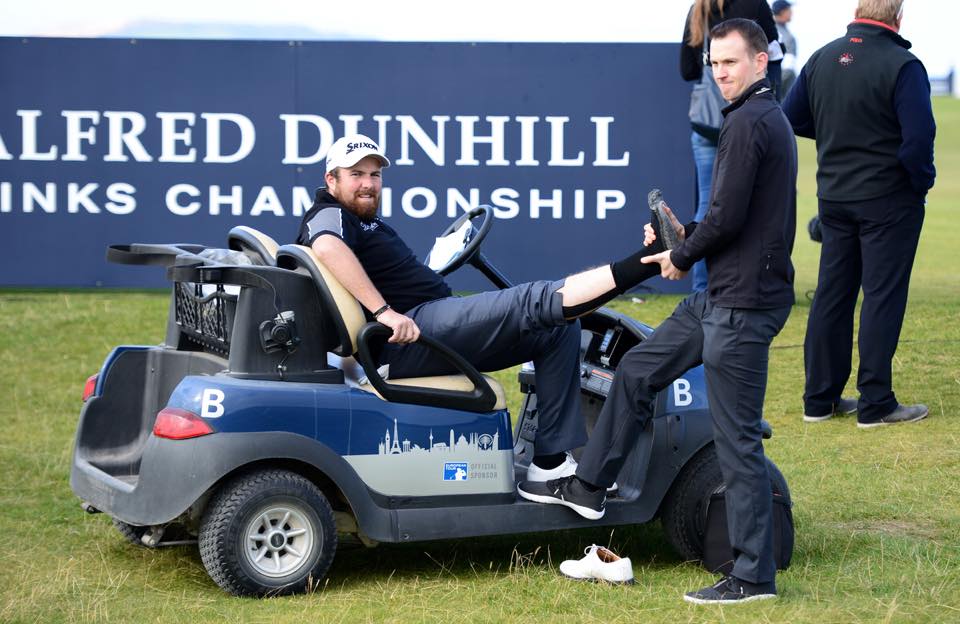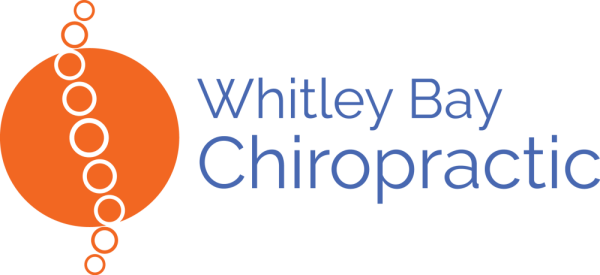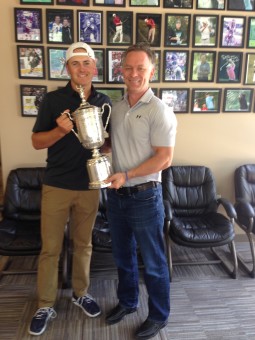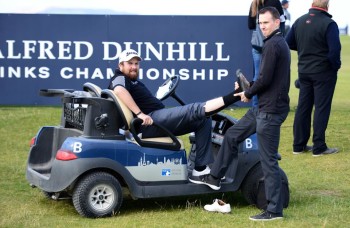Golf Performance Therapy

Secrets of the golf performance therapy behind Jordan Spieth’s and Shane Lowry’s success!
Put yourself in the shoes of a top professional golfer in his or her prime (many of us dream of it regularly). You do two things that are very tough on your spine and other major joints. You travel loads and you swing a golf club repetitively subjecting your spine and other joints to absorb some serious force. The game is changing and maximizing your athletic ability through weight training is now the norm. You know of all the golfers who came before you whose bodies let them down, shortening their careers. What would you do, and who would you hire to look after your body?
The best golfers in the world use Active Release Techniques® (ART) providers who specialize in Titleist Performance Institute (TPI) exercise prescription. Troy Van Biezen and Shane Lawlor are two ART / TPI experts who have been on tour for years with some of the biggest names in golf. Van Biezen works with Jordan Spieth, Jason Dufner, Zach Johnson, Rickie Fowler, Nick Watney,.. while Lawlor has been on the european Tour for 6 years with the likes of Shane Lowry and Padraig Harrington.
The importance of expert soft tissue therapy
The focus of golf performance therapy is to ensure that the golfer has full range movement of the spine, shoulders, hips,knees, and ankles. Imbalances or asymmetries of movement can cause other areas of the body to compensate. Often soft tissues (muscles and sometimes joint capsules) are the restricting factor which does not allow “normal” full range movements. It is more efficient and effective to address soft tissue restrictions with hands on manual therapy, rather than stretching programs alone. A combination is always best, but when time is of the essence, expert soft tissue work like ART is utilized first.
“The soft tissue component is crucial, imbalances and dysfunctions need to be addressed.” Troy Van Biezen
“Troy Van Biezen has been an integral member of my team since high school, I trust him fully and he now tours with me. Chiropractic care with a goal of achieving better postural balance and injury prevention, has been invaluable to my health, performance, and success.” Jordan Spieth
What is ART?
ART is a hands-on soft tissue treatment of ligaments, muscles, tendons, and nerves. It is the market leading soft tissue therapy in the world, used by every NFL team. The technique involves a patient shortening a muscle, the ART provider applies tension to the muscle with his/her fingers. The patient then lengthens the muscle forcing it under the provider’s contact. The patient feels a “good hurt” which provides a stretch that you need, but you can’t do by yourself.
Getting the players ready
During the week of a golf tournament, Van Biezen takes his athletes through an assessment every morning. Van Biezen describes the normal routine as, “Players get a functional assessment including muscle testing and joint range of motion testing two hours before tee-times, we follow it up with hands on treatment and a dynamic warm-up. Each player’s individual tendencies and imbalances are checked and addressed to stay on top of them. After the round, corrective based exercises are employed.” The system must be yielding results as his players are higher than ever in the world rankings.
Movement screening is used to find imbalances. Weaker muscles often over work, and as imbalances become worse the weaker muscle can break down and becomes painful. Hands on therapy and specific exercises are used to address the imbalances which the screening has flagged up. A good example occurred recently with Nick Watney a player Van Biezen looks after, “Nick was struggling with his swing one week, and he brought his coach in. The imbalances and weaknesses we found in the screening evaluation were evident in his golf swing. I was able to show his coach what we usually see, his typical patterns and how we correct it through soft tissue adjustments and corrective exercises”. Spieth’s coach TPI instructor Cameron McCormick, noticed a tendency for him to sway when swinging. McCormick asked Van Biezen and his trainer to focus on increasing Spieth’s hip mobility. The team approach has obviously working for Spieth.
If you’re not assessing, you’re just guessing
The Titleist Performance Institute is a leading advocate of training golfers to become more athletic. This is achieved by testing and improving the movement fundamentals first: mobility, coordination, and balance. Only when adequate foundational movements are demonstrated does strength, endurance, power, and skill acquisition become the focus of training. Corrective exercises are prescribed to address weaknesses / imbalances, often golfers develop tendencies which a well thought out training program can keep at bay.
How to take the pressure off of the lower back
Lower back pain in golfers is an example where addressing the problem is often best served by getting better movement of the hips and mid-back. Lawlor explains, “If the mid-back and hips are not rotating enough the lumbar spine may compensate and the lumbar spine is not designed for a great deal of rotation”. Preventing lower back pain is what the golfer is hoping for when he or she hires a top TPI / ART expert to come on tour. Through daily screening followed by therapy and exercises, the hips and thoracic spine are kept mobile and stabile keeping the pressure off of the lower back.
Photo golffile.photoshelter.com
“Shane is an integral part of my performance team and he has definitely added to my game over the past 3 years. His combined skills of Chiropractic & ART ensure that I am prepared physically for each round I play. I believe working with Shane is helping me to prevent injuries and will hopefully lengthen my career.” Shane Lowry
Exercising more effectively
Lawlor’s time on the European tour brought home the importance of incorporating tailored rehab / training programs. The tour players need efficient and effective training due to time constraints.. “Some of the mistakes I see are overstretching, players often waste energy and time stretching an area that doesn’t need it. Another problem is spending too much time doing isolated strength work. Multi-joint exercises require more full body stability and flexibility and are therefore more effective for golfers. Lastly players need to build on a foundation of decent flexibility and stability, before strength and power work is added to the training.”
Help for recreational golfers
The average hacker has the same flexibility problems as the professionals only worse in most cases. If you feel your flexibility or balance is holding your game back seek out a TPI professional who works with an ART soft tissue specialist.
You may also like.
Articles I wrote or contributed to:
Telegraph Athletics Weekly 220 Triathlon Vigour Magazine FIT Institute
Podcasts I was on:


